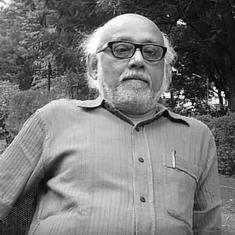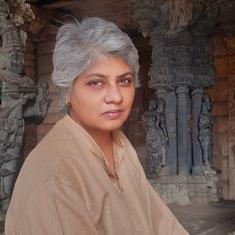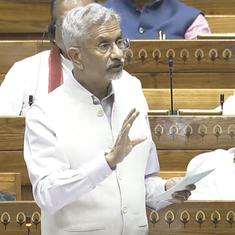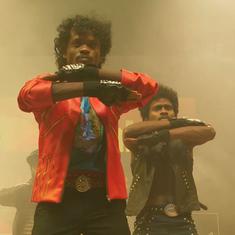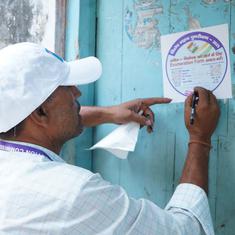Avadhoot Khanolkar’s charming documentary Bade TV Wala gets its title from a conversation between film projectionist Jagjivanram Maru and his grand daughter, who mistook the cinema screen for a very large television. Maru provides the 27-minute documentary, which has been produced by the Public Service Broadcasting Trust, with many more such camera-friendly moments. As the filmmaker and cinematographers Ajay Noronha and Dani Raymond record him at his apartment in a Mumbai suburb, he instructs his family to “be more natural”. Make more noise while washing the vessels, he advises his wife Bharati. For a man who has spent over 40 years projecting Hindi film fantasies ontothe big screen, Maru sure does know how best to make an impact.
Maru is among a fading breed of projectionists in a city that has moved almost entirely towards digital projection. The art of loading 35 mm reels onto machines and ensuring a smooth and glitch-free relay of a movie is a dying skill, and such documentaries as Bade TV Wala and the American production Dying of the Light capture the final gasps of this reality.
Maru is currently employed as the chief projectionist at Maratha Mandir cinema in central Mumbai,which is famous beyond the city for having screened Aditya Chopra’s Dilwale Dulhania Le Jayenge continuously since its release in 1995. The movie has an 11.30 am slot at Maratha Mandir, and every time it appears that the Shah Rukh Khan-Kajol starrer can be replaced with another title, the seats fill up with fans old and new, Maru says. He jokes that the Maratha Mandir job will be his last, and that he will last as long as Dilwale Dulhania Le Jayenge plays there.
Maru has worked with several single-screen cinemas in Mumbai, and he provides a snappy history of the city’s movie-going habits. He wistfully mentions the respect that filmmakers gave the cinemas that provided them with their primary source of income. He also provides insights into shuttling, which refers to the practice of cinemas sharing film reels to cut down on costs.
Maru spent his childhood in a shanty whose walls were made out of strips of wooden boxes, he tells Khanolkar. His family possessed one plate, one bowl and one glass, which meant that only one of them could eat at a time. From there to the modest flat in which he lives with his family is a big achievement and a testament to his grit and hard work – a movie could be made about it, or a documentary like Bade TV Wala. The documentary is well shot and its subject is rivetting, but the otherwise smooth telling is marred by jump cuts, whose use seems anachronistic in a narrative about an old-fashioned form of movie consumption.


